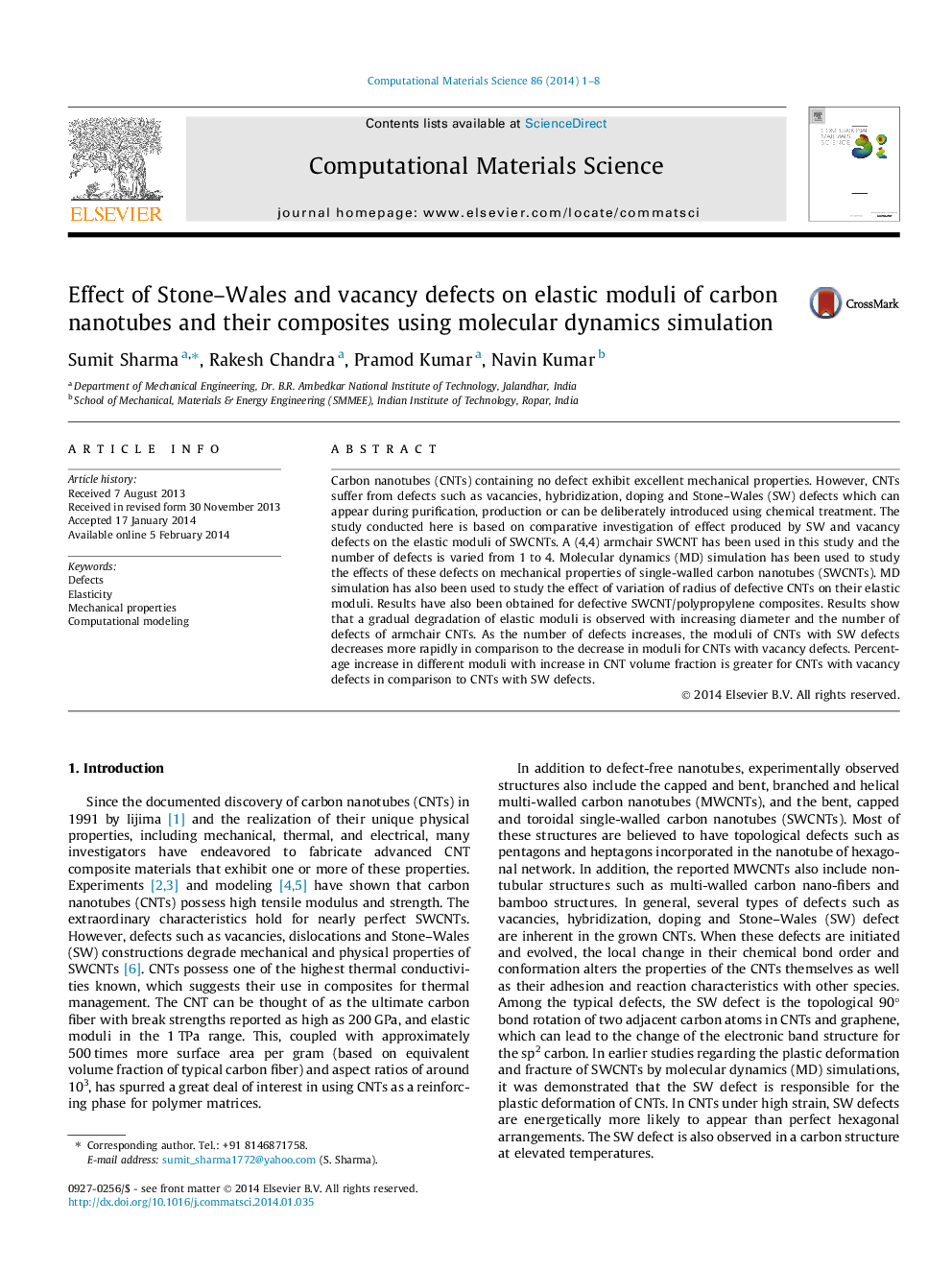| Article ID | Journal | Published Year | Pages | File Type |
|---|---|---|---|---|
| 1560934 | Computational Materials Science | 2014 | 8 Pages |
•A gradual degradation of strength is observed with increasing diameter of armchair CNTs.•As number of defects increases, moduli of CNTs with SW defects decreases more rapidly.•Increasing the number of defects from 1 to 4 reduces transverse moduli (E22) by 50%.•With increase in radius, modulus decreases rapidly till radius is 5.42 Å.
Carbon nanotubes (CNTs) containing no defect exhibit excellent mechanical properties. However, CNTs suffer from defects such as vacancies, hybridization, doping and Stone–Wales (SW) defects which can appear during purification, production or can be deliberately introduced using chemical treatment. The study conducted here is based on comparative investigation of effect produced by SW and vacancy defects on the elastic moduli of SWCNTs. A (4,4) armchair SWCNT has been used in this study and the number of defects is varied from 1 to 4. Molecular dynamics (MD) simulation has been used to study the effects of these defects on mechanical properties of single-walled carbon nanotubes (SWCNTs). MD simulation has also been used to study the effect of variation of radius of defective CNTs on their elastic moduli. Results have also been obtained for defective SWCNT/polypropylene composites. Results show that a gradual degradation of elastic moduli is observed with increasing diameter and the number of defects of armchair CNTs. As the number of defects increases, the moduli of CNTs with SW defects decreases more rapidly in comparison to the decrease in moduli for CNTs with vacancy defects. Percentage increase in different moduli with increase in CNT volume fraction is greater for CNTs with vacancy defects in comparison to CNTs with SW defects.
